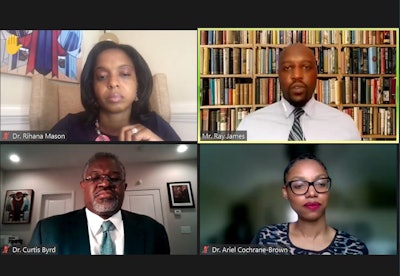Over the next decade, the education landscape is expected to shift.
As early as 2022, 51% of college-bound graduates are projected to be students of color. By 2029, the number is expected to reach 55%, according to the National Center of Education Statistics.

Using the book’s Type, History, Research, Inclusion, Identity, Voice and Expectation (THRIVE) index tool, students can learn about overall expectations, inclusion practices, social capital and notable participants of each pipeline program.
“Many of these students come from low income and first-generation populations into college,” said Byrd, special advisor to the provost at Georgia State University (GSU). “These programs have certainly been proven to be effective in increasing the likelihood of success in K-12, college and graduate and professional studies.”
To further discuss best practices of pipeline programs and encourage more underrepresented students to pursue the academic pipeline, Byrd and Mason—in partnership with SAGE Publishing—commenced a three-part webinar that kicked off on Wednesday.
“Positioning Underrepresented Minority Students for College: Best Practices of Precollegiate Pathway Programs,” highlighted two programs: Knowledge is Power Program (KIPP) and College Advising Corps.















